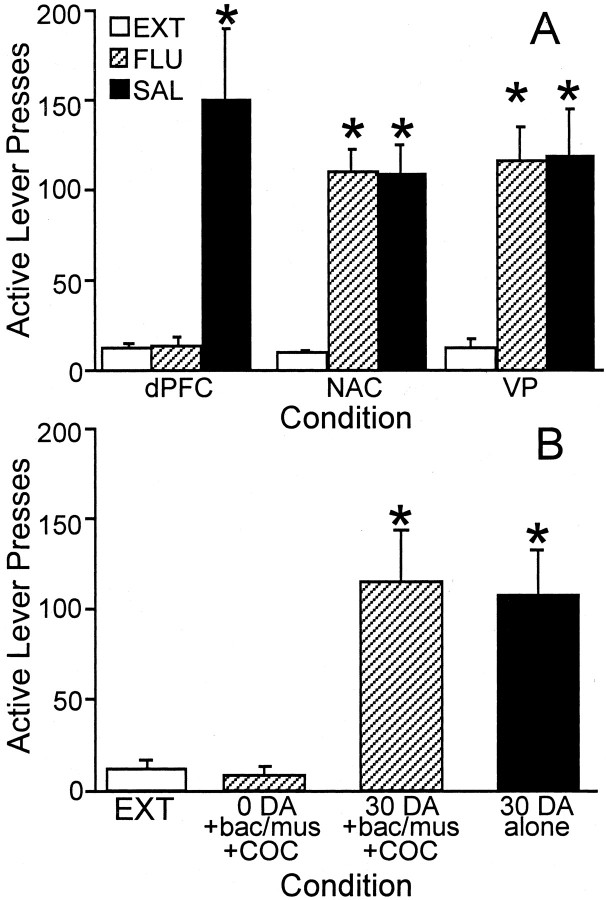Fig. 5.
Role of dopamine in the dPFC in cocaine reinstatement. A, Fluphenazine (FLU) infusion into the dPFC, but not the NAcore or VP (n = 6 in each condition), before reinstatement testing abolished the increase in active lever pressing observed after pretreatment with saline vehicle (SAL).B, After bac–mus (0.3 and 0.03 nmol/side, respectively) activation of the VTA, subjects received either saline (0 nmol;n = 5) or dopamine (30 nmol/side;n = 7) infusions into the dPFC before a cocaine (COC) reinstatement challenge. When no dopamine was infused into the dPFC, subjects exhibited the expected blockade of cocaine-induced reinstatement, similar to that seen after inactivation of the VTA in Figure 1. However, dopamine replacement into the dPFC resulted in a highly significant reinstatement of self-administration behavior. Similarly, dopamine alone into the dPFC was sufficient to induce robust responding. *p < 0.001, comparing extinction (EXT) responding with other treatments.

